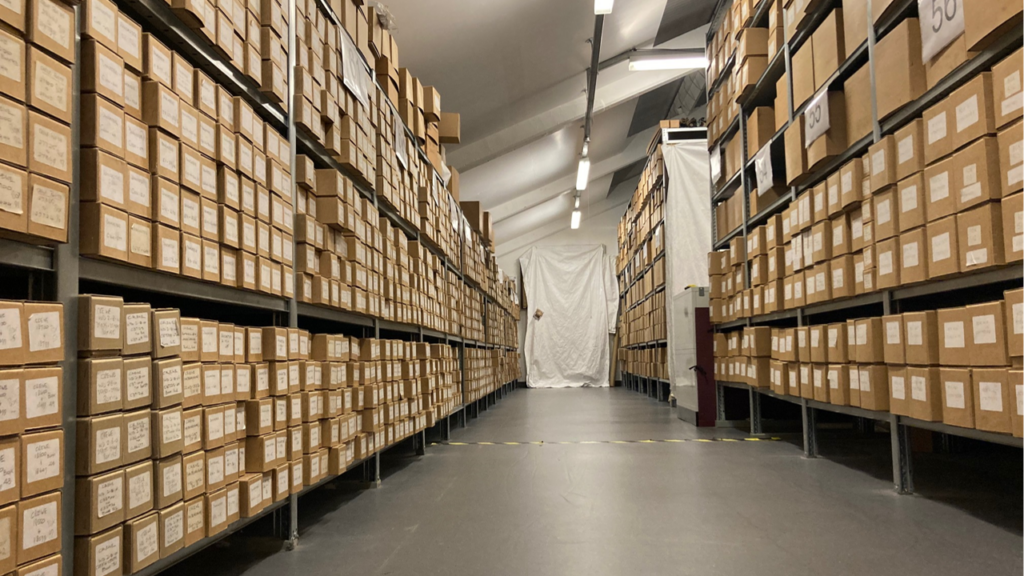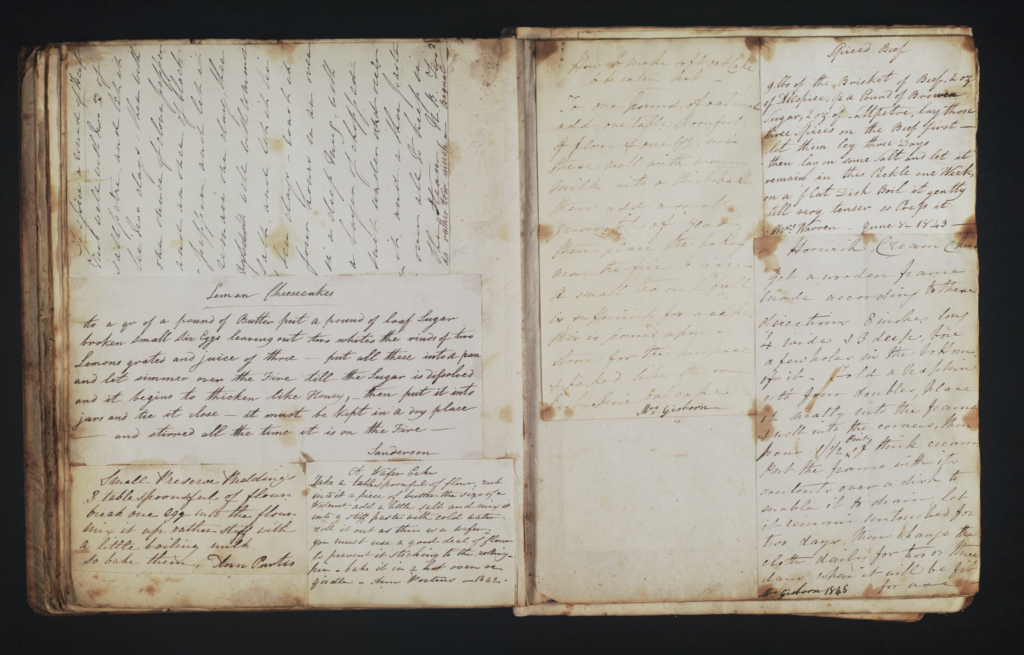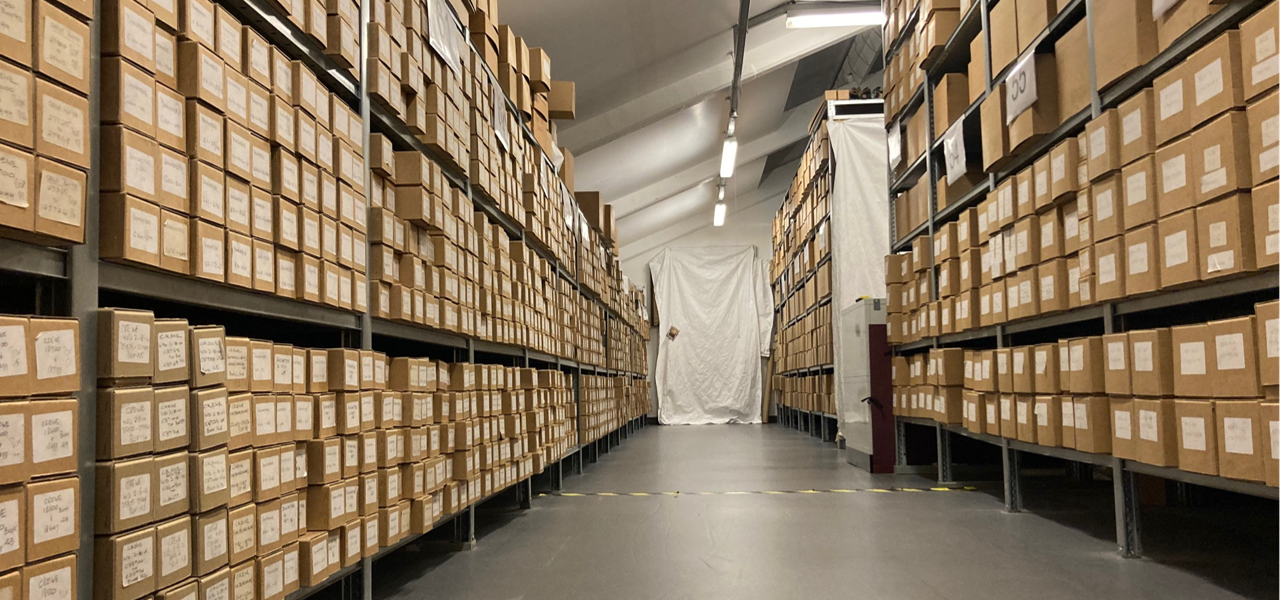Have you ever thought about donating something to a museum? At the National Railway Museum our Collections and Research team constantly receive offers to donate items for collection. So why are nearly all of them declined? Read on to find out…
The National Railway Museum collections are huge. What you can see on display at York or at Locomotion is just the tip of the iceberg. Like most museums, a large proportion of the collections remain out of sight. That is particularly true of material like archival documents, drawings and posters, but most of them are available to view by arranging a visit to Search Engine, our library and archive centre. We have literally miles of shelving which are almost full with collections—and, like many archives, we have little spare space.

Where did all these items come from? The museum inherited many items from the historical collections of the British Transport Commission and British Railways that operated museums at Clapham and York. The Science Museum has also collected many railway-related items since it opened in 1857 (big things like Stephenson’s Rocket or the English Electric Deltic, but also smaller items like the first engineering drawing of a steam locomotive from 1803).
Since 1975 when the new museum opened in York, we have continued to collect material. In fact it could perhaps be said that we collected too much, the default decision often seems have been to accept, even when we already had identical or similar items already. The volume of material collected created a problem as in some cases donated items were not fully processed and even now some remain in a state of limbo in our acquisitions backlog 40 years on. This is a problem that we are trying to deal with. It is a big problem that will take time to solve, but we are making progress!
I’m sure you have heard of the adage “if you are in a hole, stop digging”. To that end, a few years ago we stopped the collecting in one part of our collection, that of printed ephemera from the pre-1993 period. This includes material such as timetables, rule books, railway operating documents, guide books and so on. This is the most common type of material we are offered, we already have lots of items and it forms the majority of our accessions backlog.
This doesn’t stop a constant stream of offers via email for such items, but it does mean that we have a simple and quick response, which is to thank the donor, decline the offer and try to suggest other places to offer the items to. More troublesome and often time-consuming are the packages of items that people regularly send to us, sometimes anonymously and often with no details of what they would like us to do with them in the event we don’t want them (as will usually be the case). As a simple example, about a year ago we received this platform ticket for a well known Welsh station with a very long name…

There were no details from the donor and nothing to indicate what we should do with it if we didn’t want it. We already have a few examples in the collection of the souvenir platform ticket for the station, and while we do pass some donations of books onto the Friends of the National Railway Museum to raise funds, this wasn’t really the sort of thing we could pass on to them. Rather than just dispose of it than by popping it in our office recycling bin, I thought I would keep it to use as an perfectly shaped railway themed bookmark! So it has been re-purposed and also provides a constant reminder of the issues with these type of anonymous donations.
Of course there are rare occasions when we receive unsolicited donations that we really do want to accept for the collection. This includes one of the most fascinating archive items we have added in the last 10 years, the household recipe book of George Stephenson. This amazing item was sent to us from overseas but got held in the postal system due to additional charges, and as we weren’t expecting it or even knew what was in the parcel, there was a risk we may never have received it! This a good example where it is really important to get in touch with us first before sending items as it helps with the process of acquiring the object. It took us from receiving it in 2012 until 2017 until it was actually accessioned into the collection.

So if you are considering donating something to us, here are some important things to consider beforehand which will really help.
Some dos and don’ts:
- Do contact us first in writing, by email preferably as that way you can easily attach photos of the items and we can also forward your offer on to the relevant curator
- Do let us know any information about how you acquired the item, and any other provenance you have before you owned it (e.g. has it been in the family for years?)
- If you have a collection of items, do tell us how big the collection is and how much space it takes up. We have limited space to store newly acquired material, so we do have to be selective about what we collect
- Check yourself whether we already have an object via our online collections site or our library catalogue
- Don’t bring in objects to the museum without arranging it in advance with a curator. Our Search Engine team are not able to accept objects over the counter, and we cannot keep things “on approval” to send back if we don’t accept them.
- Don’t send items in the post without prior agreement. We receive many unsolicited donations and in most cases we don’t wish to accept them and therefore it takes time to contact the donor and ask what they want to do with them.
- Don’t send donations anonymously. Even if it is an item we might be interested in, if we don’t have the donor’s details we cannot start to process a donation. The acquisition process makes the museum the legal owner of the object, so it is important we know who we are acquiring it from.
Another important thing to consider, especially in the case of articles that have a strong connection to your family, is whether you really want to donate them at all? We are often offered items that were owned by family members and offered as they think no-one in the family is that interested in their history. But in future someone in the family may take a keen interest in the story of their ancestors and wish they hadn’t been given away. From time to time we are contacted by relatives of people who donated items years ago, asking if they can have the items back. Of course this is rather difficult, as removing items from the permanent collection of our museums is not something that is easily done .
Some categories of material are not collected as part of the permanent collection. This mainly applies to much of the published material in our library collections (apart from older 19th-century publications that form our rare books collection), as otherwise we wouldn’t be able to make them easily available on open access, so if you have a book (or have written one!) that we don’t have in our library and would like to donate it, we would be pleased to consider it for the library collection. We are unable to accept offers of large collections of books (we will probably have almost all of them), but we can pass on your offer to the Friends of the National Railway Museum for their second-hand book sales.
We also don’t usually take items on loan other than for objects that are for display in exhibitions.
If you do wish to donate something, the best place to start is to look at our donate an object page.
